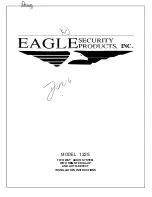
The Packet Radio
“
2 N 1
”
Handbook
by
Buck Rogers
K4ABT
Section 1
;
Packet Radio “The Basics
”
Section 2
;
The X1J4 System Node Operator’s (SNO) Handbook
Section 1
;
Packet Radio “The Basics
”
A Packet Primer for the new Packeteer
__ Page 0
This lets us know that the computer and TNC are
communicating.
Now that you have entered your call sign as we have just
described, followed by a carriage return, (CR or [Enter],
we are ready to set other commands into our TNC. If
there is no response when you type MY, then try typing:
ECHO ON
[Enter]
The :cmd:" should appear on the screen again, with a
message similar to the following:
ECHO was OFF
NOTE; If you are seeing double letters (i.e.; MMYY
CCAALLLL) displayed when you type, this indicates that
the ECHO command should be turned
OFF
. Type the
following :
ECHO OFF
The TNC may respond with:
ECHO was ON
Here are some other commands that we should make
active; Type them in as I have shown them below:
MON ON
MCO
M
ON
MCO
N
OFF
MRPT ON
If you’ve wired the RS-232 interface cable using the
RTS, CTS, Txd, Rxd, and Signal Ground
leads, then
set
the
XFLO
command
OFF
. If you
did NOT
use the
RTS, and CTS
signals, then
make sure
the
XFLO
command is ON.
THE MOMENT OF TRUTH:
The most used frequency for VHF Packet Radio operation
is 145.010 MHz; However there are many other
frequencies that are set aside for Packet Radio use. The
SouthEastern Digital Association Networks (SEDAN)
is
operating at 145.770 Mhz..
The following is a list of other VHF, and UHF Packet Radio
simplex
frequencies (In Mhz):
144.91, 144.93, 144.95, 144.97, 144.99,
145.01
, 145.03, 145.05,
145.07, 145.09, 145.51, 145.53, 145.55, 145.57, 145.59, 145.61,
145.63, 145.65, 145.67, 145.69, 145.71, 145.73, 145.75, 145.770.
Included in the ARRL future band plans are several
simplex (64 kB), 100 kHz backbone frequencies within
the 219 > 220 Mhz UHF band, (FCC approved 16 March
1995 with restrictions, see CQ Magazine PUN June
1995)
Below are a few frequencies that are set aside for Packet Radio use
in the 420 > 450 Mhz band:
430.050, 430.150, 430.250, 430.350, 430.450, 430.550, 430.650,
430.850, 430.950, 440.975, 441.000, 441.025, 441.050, 441.075,
446.500.
As I mentioned earlier, make sure the MONITOR
command is ON, then watch the screen. If you have
tuned to one of the Packet frequencies mentioned above
and you are not yet seeing data appear on the screen, then
try the SEDAN 1200 baud access Packet frequency of
145.770.
When all else fails call a Packet friend and ask them to
connect to your call. If you are using an *SSID of your
call, be sure to include this in the information that you
give the friend. While you are about it, ask if he/she uses
an SSID.
AWW SSID !
Now that I have you wondering; "What is an
SSID
?"
Here is a brief explanation for the “
Secondary Station
IDentification” (SSID)
. In Packet Radio you can have
up to 15
Secondary Station IDentifiers
(SSID's), an
example is K4ABT-1 through K4ABT-15. K4ABT
without an SSID extension, is considered the 0 (zero)
SSID
, thus we could have sixteen different stations/calls
on the air at the same time using our single call sign.
That's where the numbers in the call sign come into play.
The added dash numbers (-1 etc...) numbers are used to
distinguish the various station(s) or node(s).
To connect to a station or node which uses an SSID, it is
important that we know what the SSID is before
attempting a connect to that station. To try connecting to
a station or node without having the appropriate SSID
included in the connect sequence would be like trying to
place a long-distance telephone call without using an
area code. A crude analogy, but you get my drift.
You are about to embark upon the most fun filled facet of
Ham Radio. Give it a try.









































